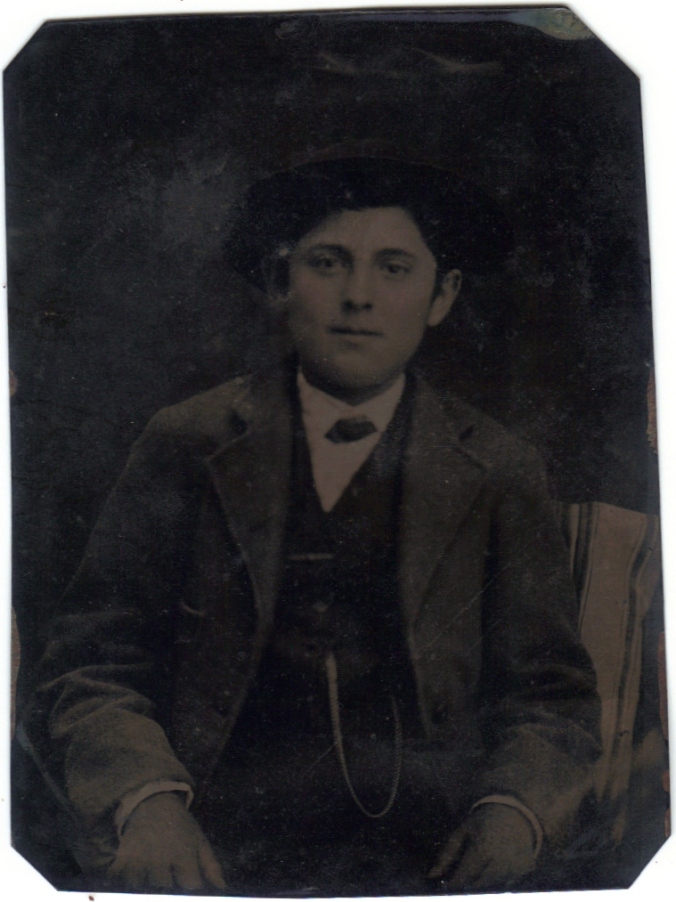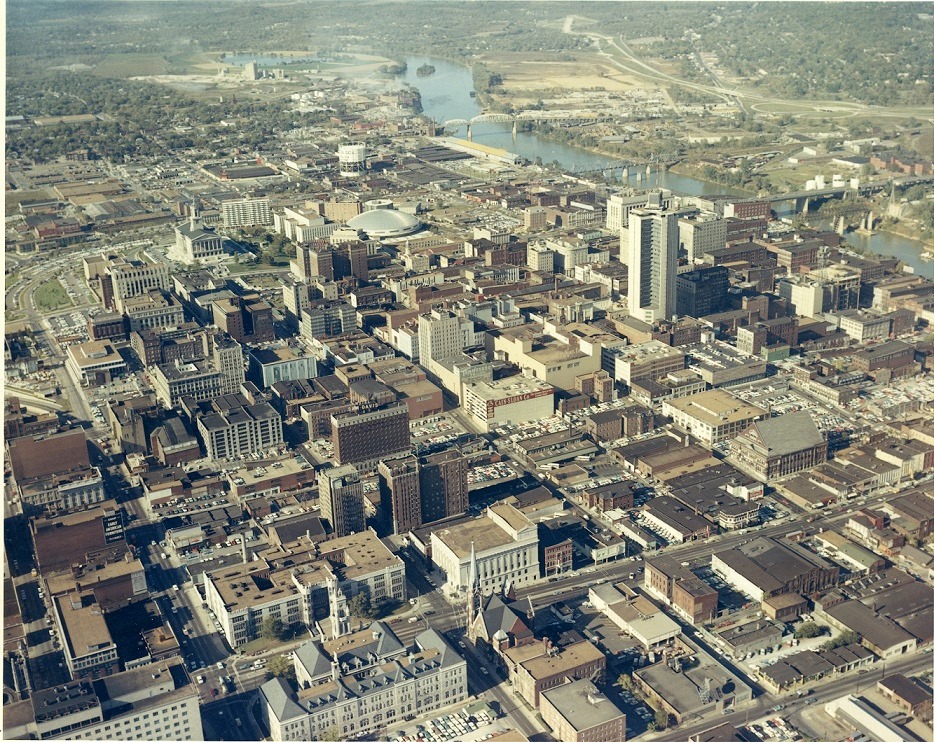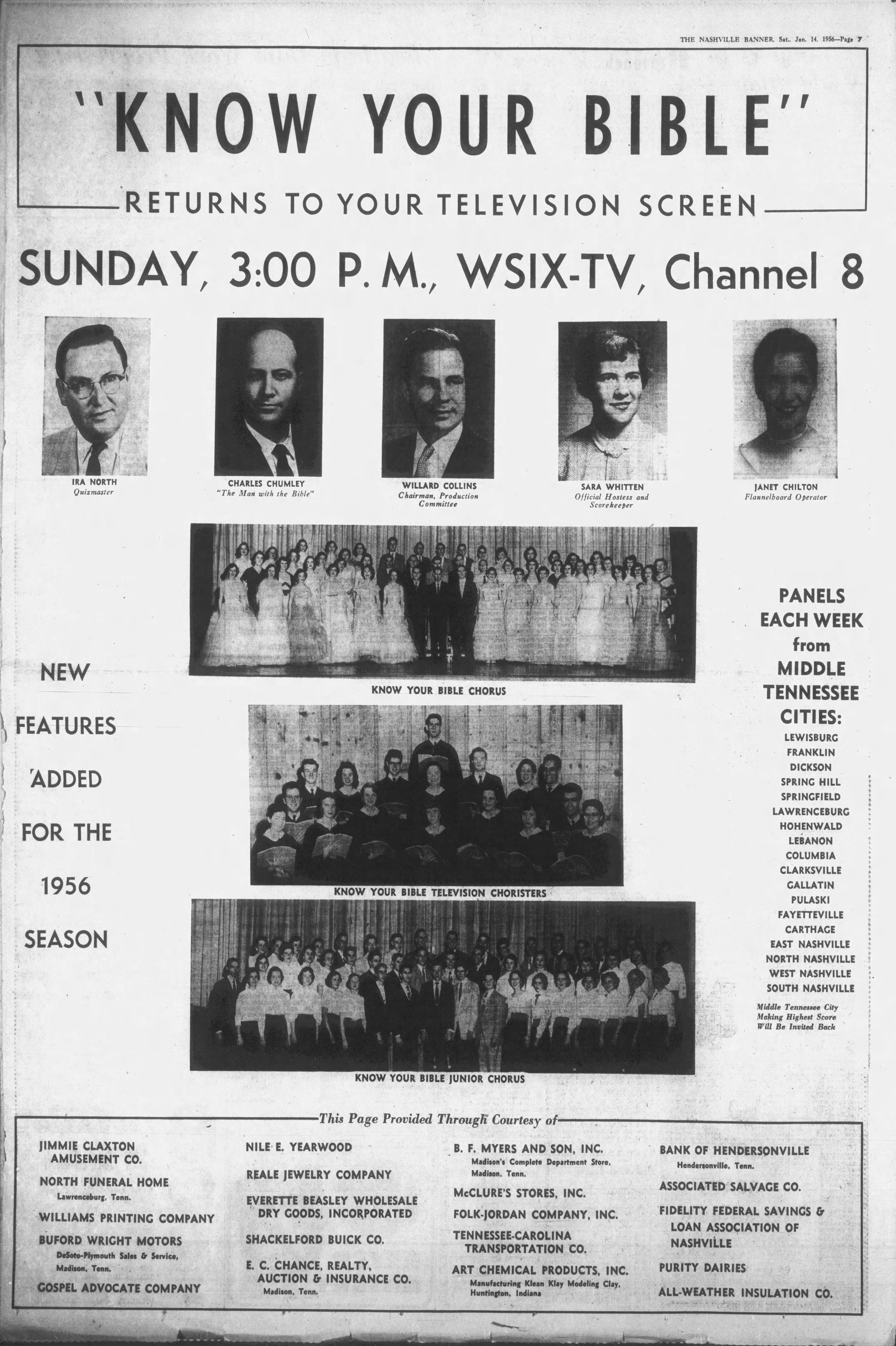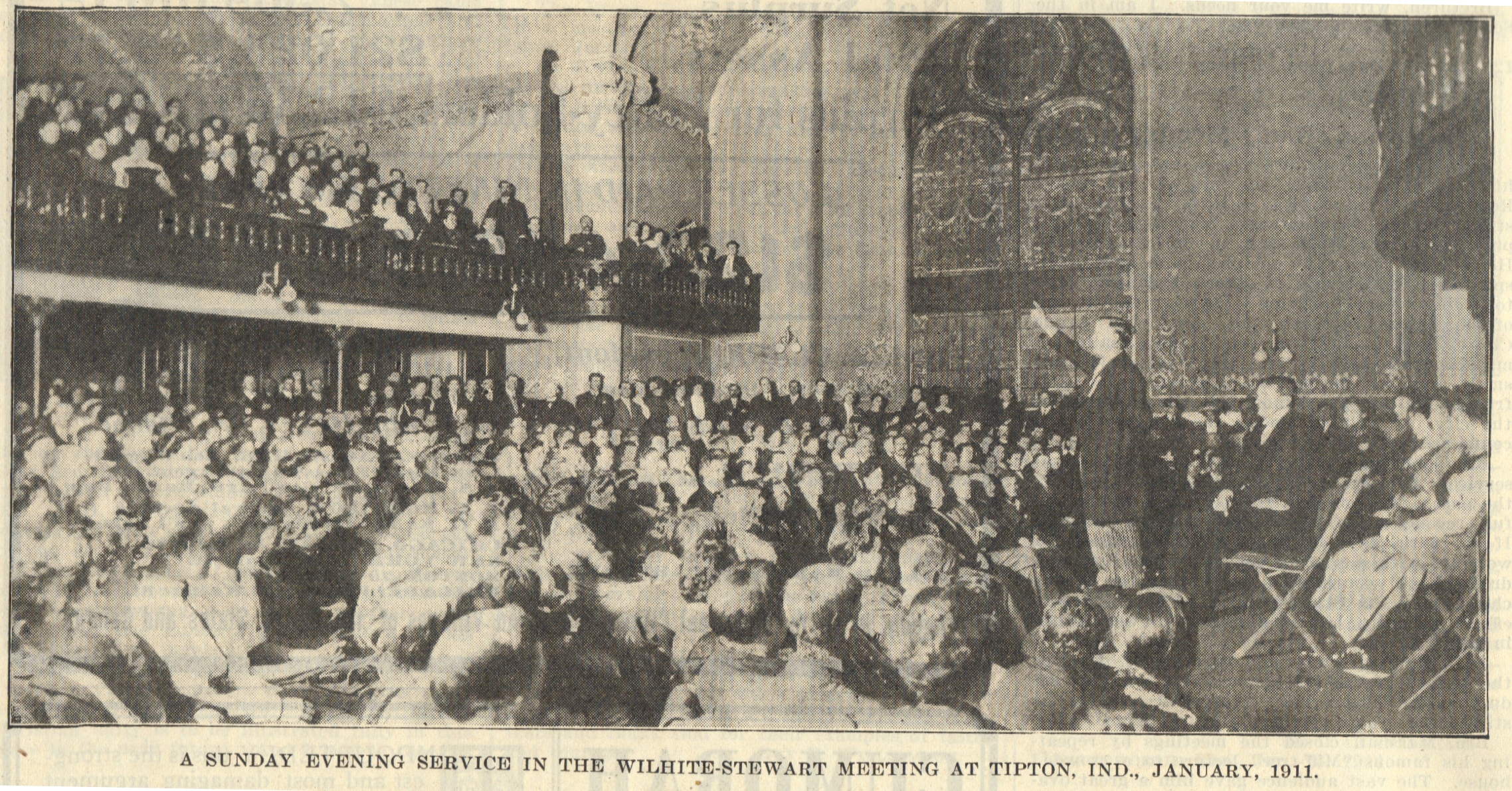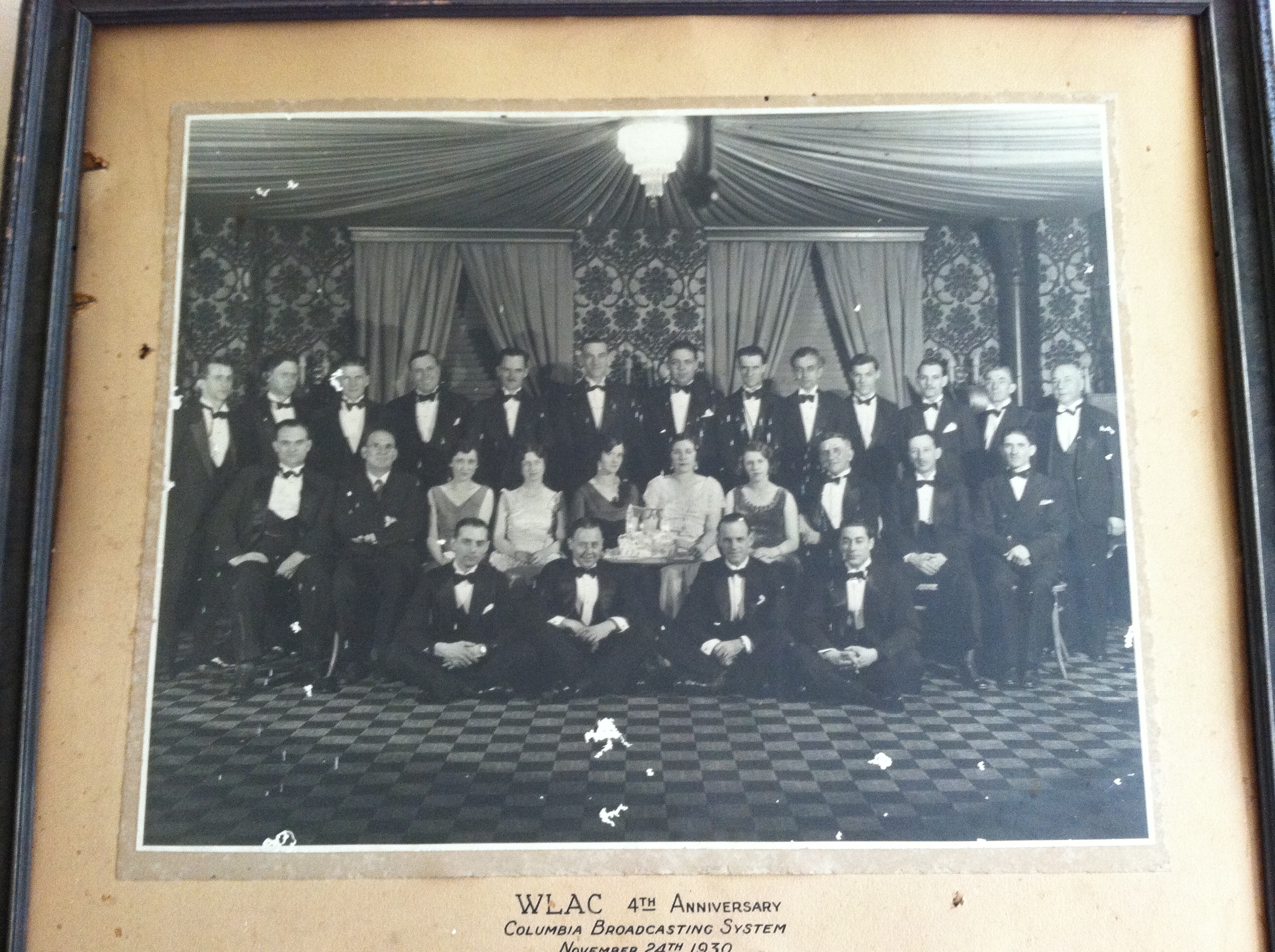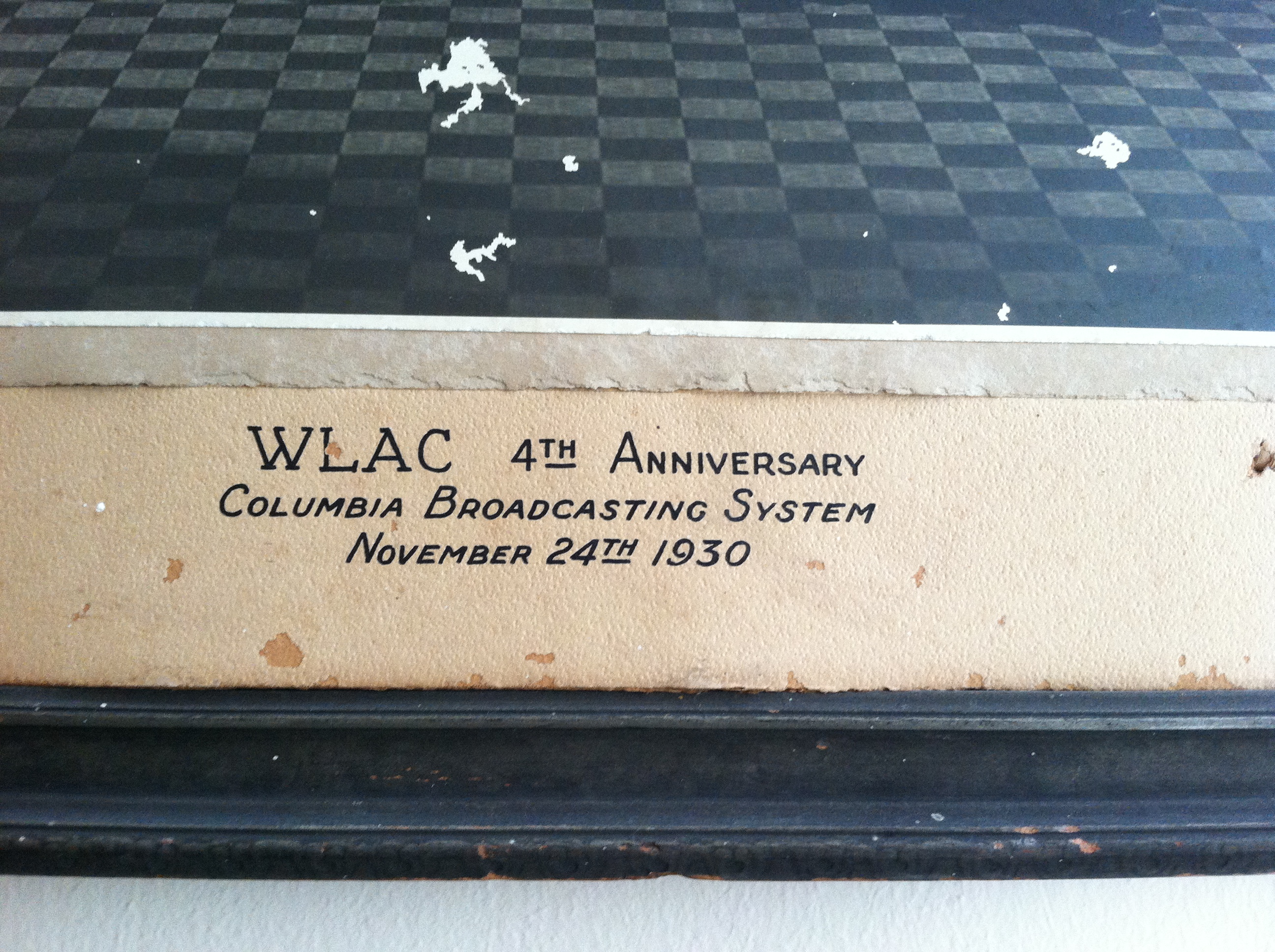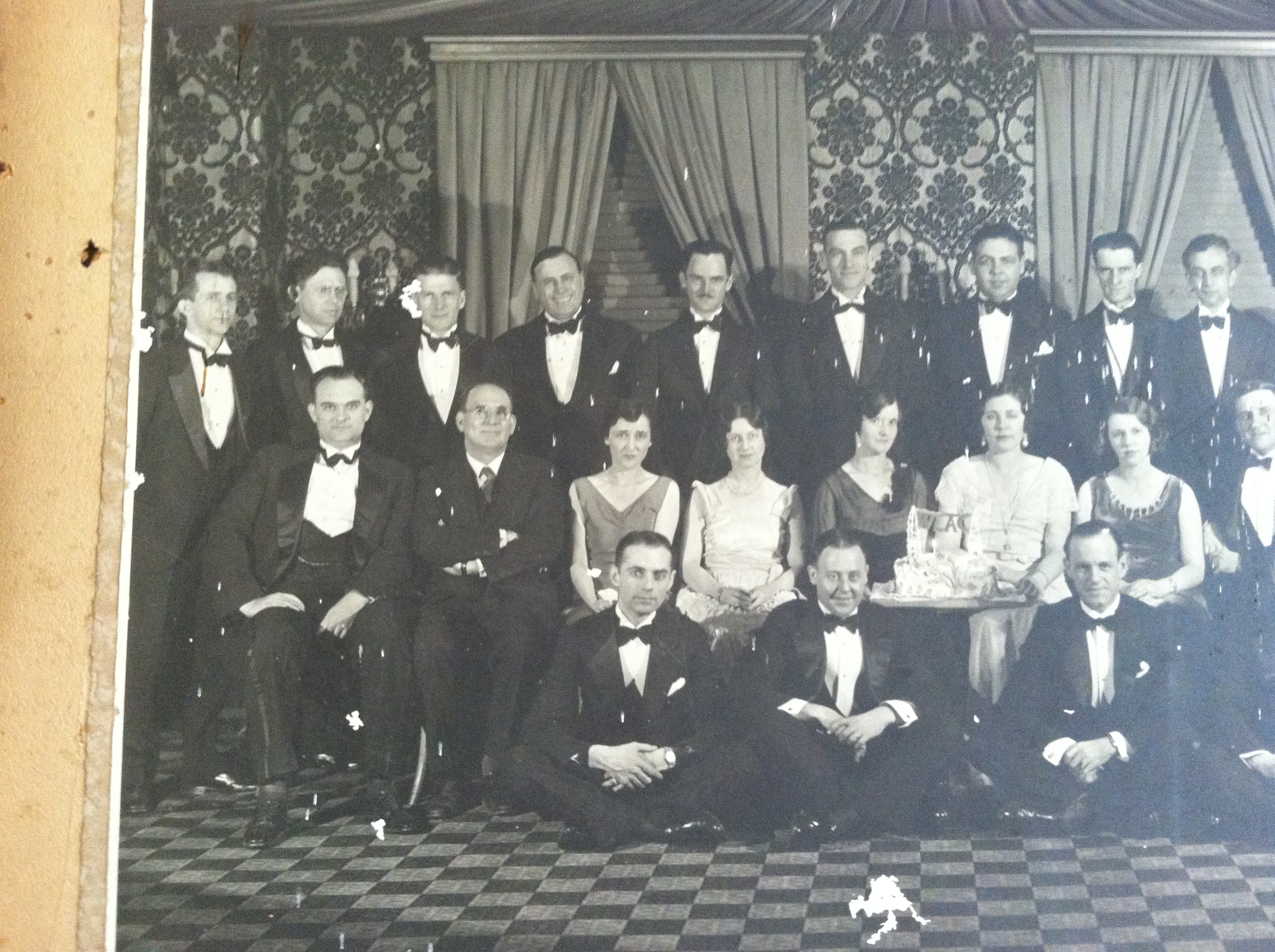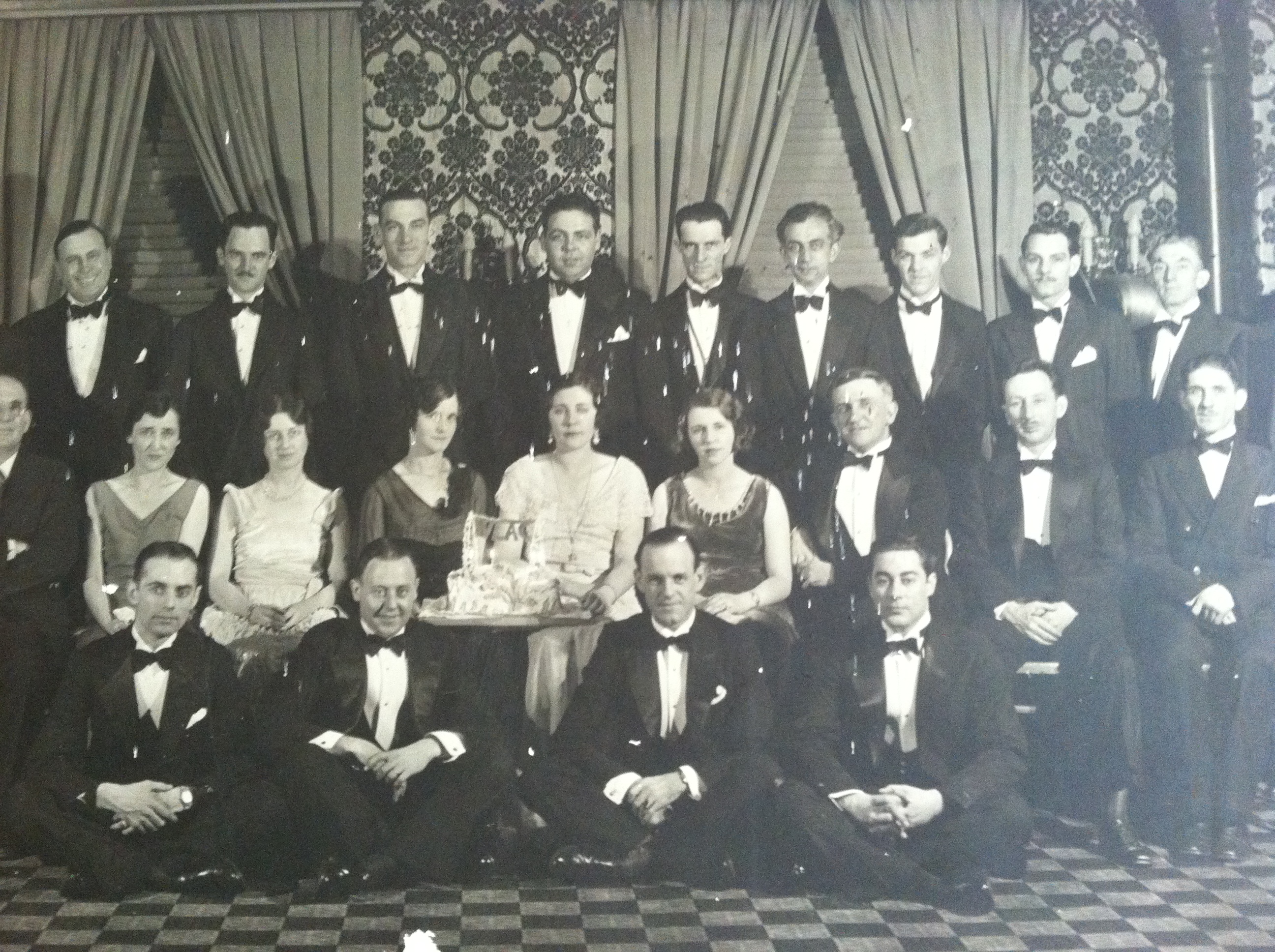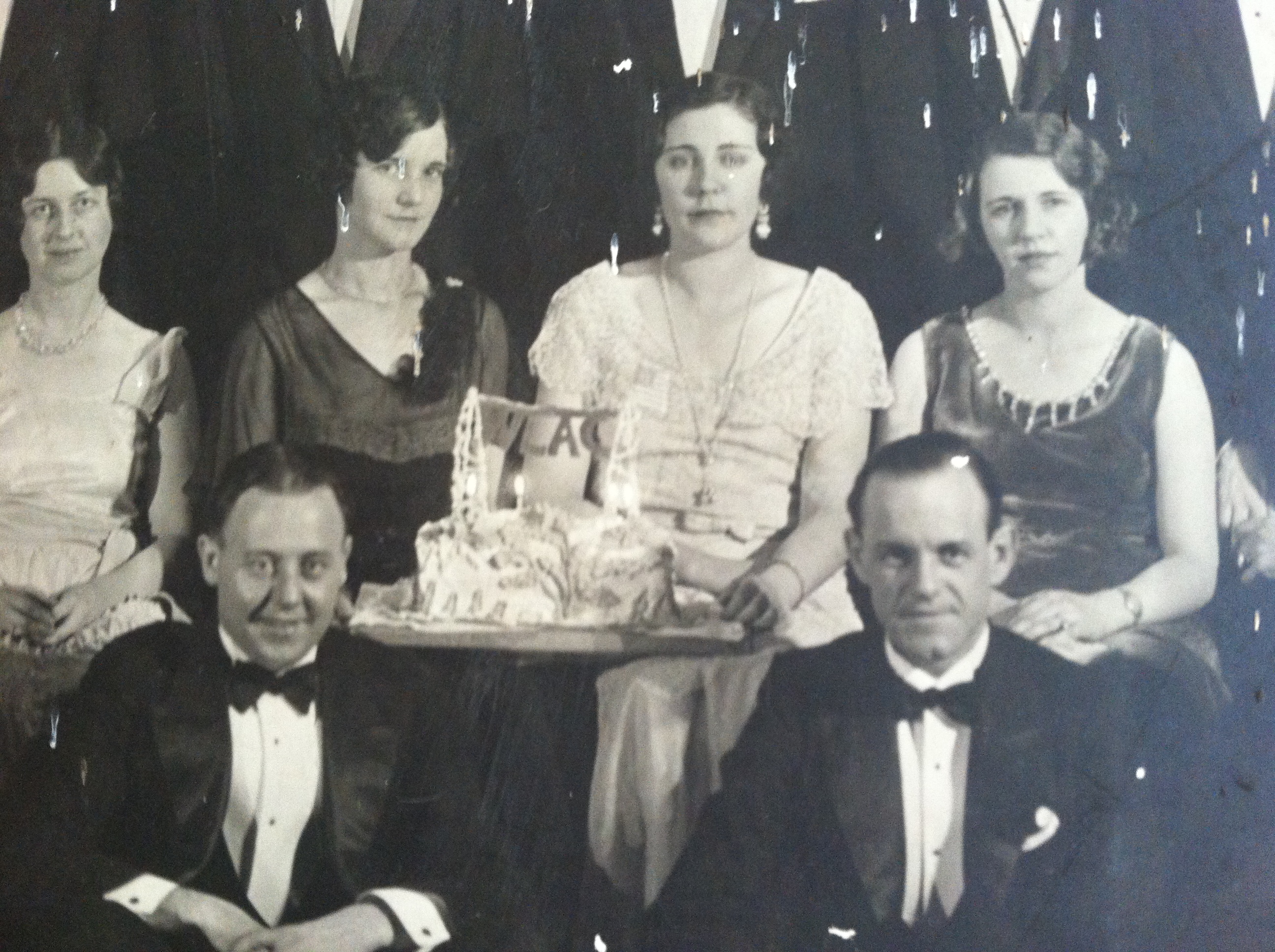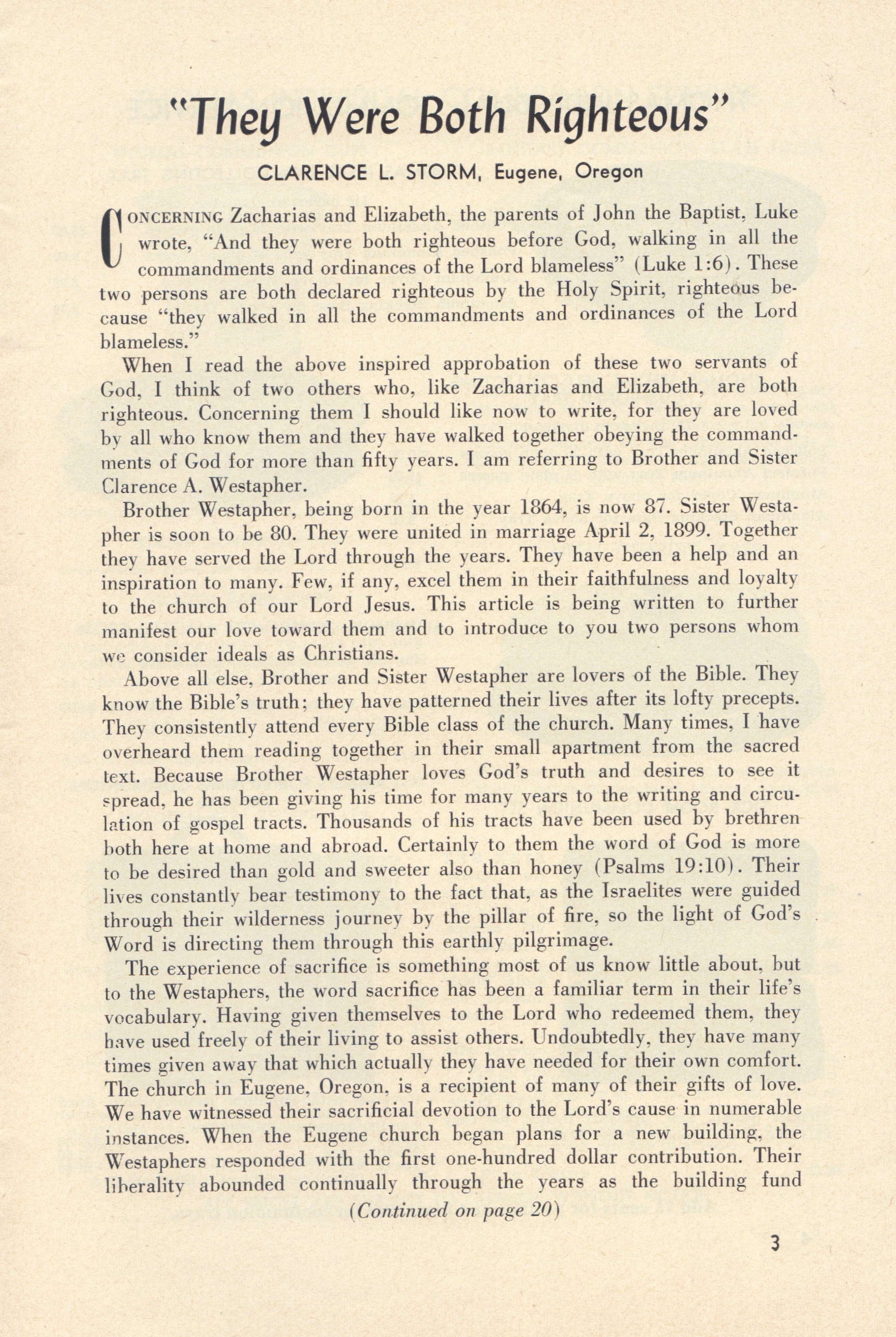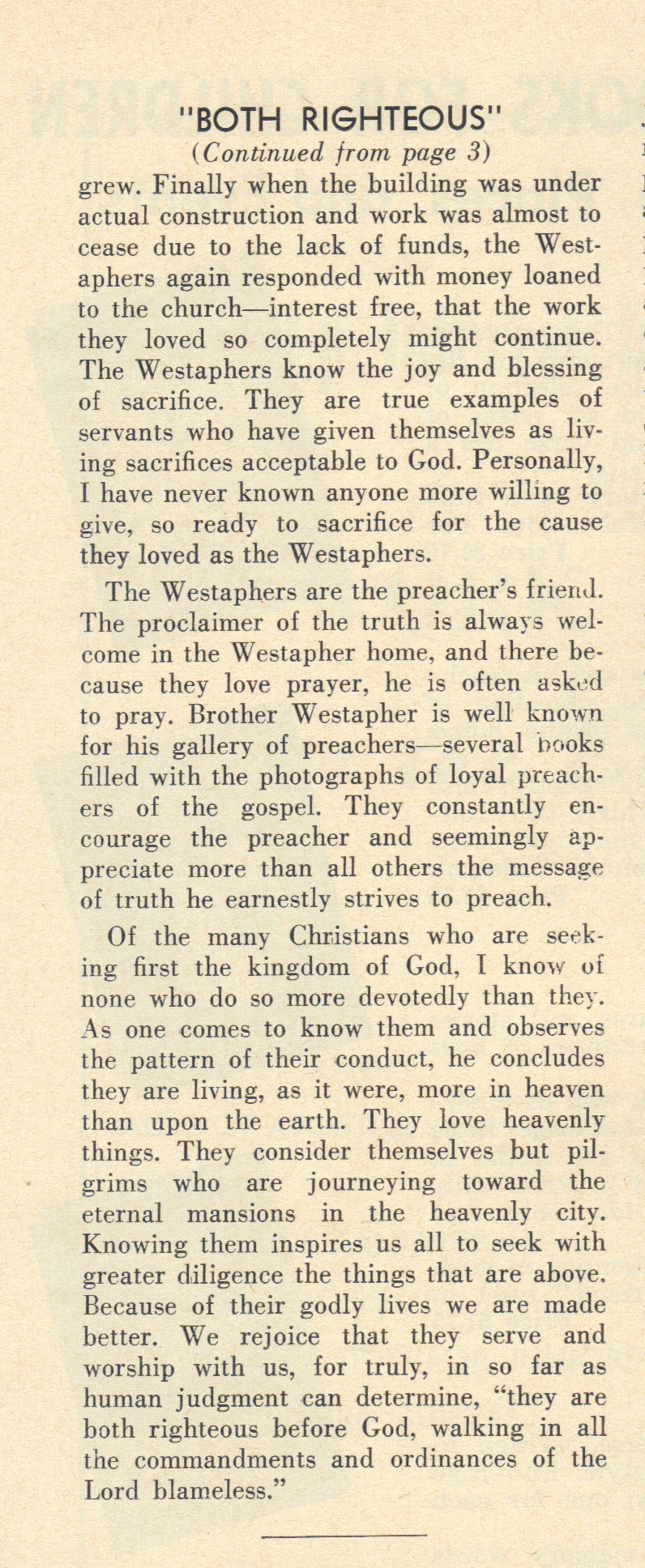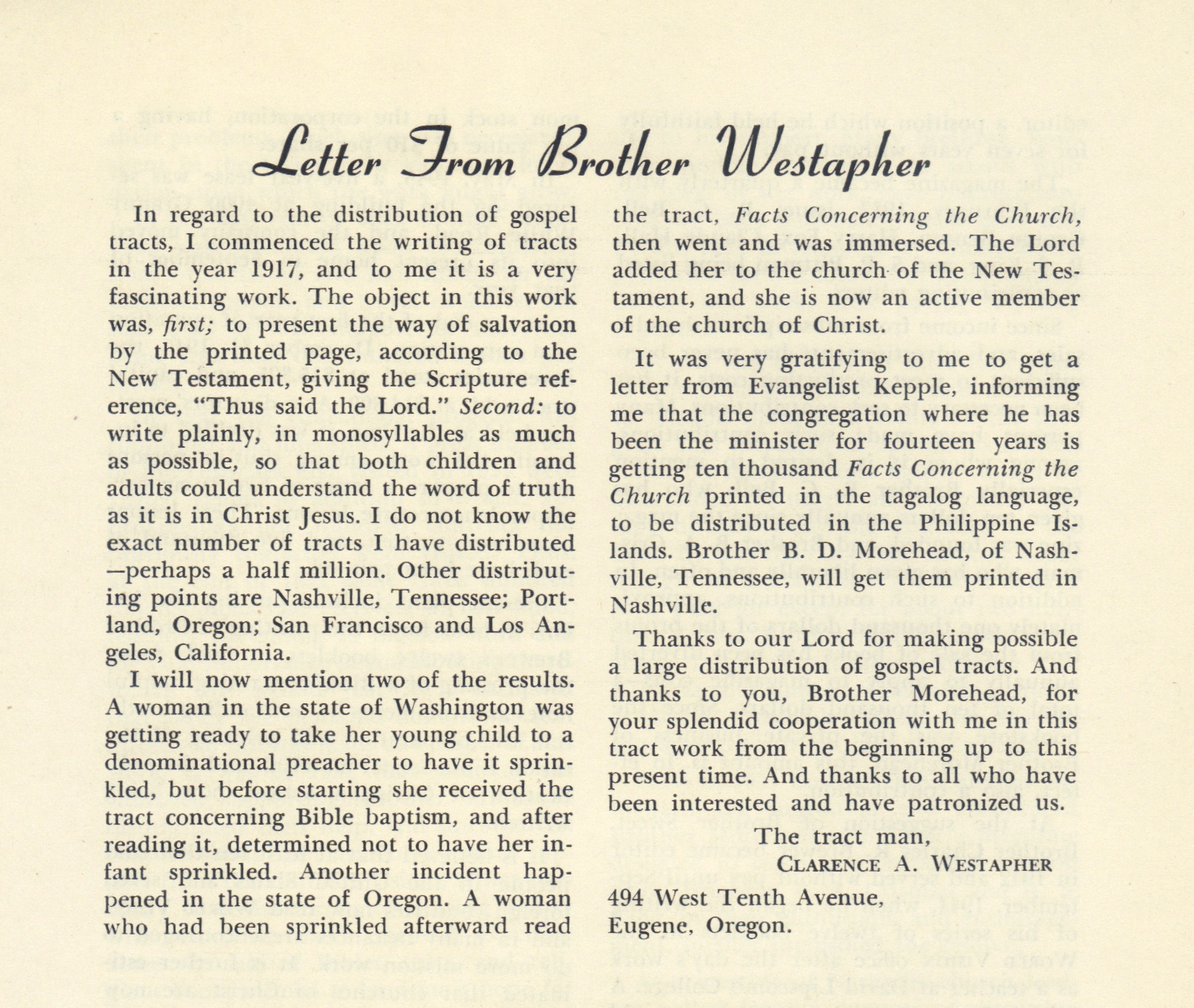Grace Avenue Church of Christ (Nashville, TN) Homecoming and Reunion 1992
This video was prepared in late 1992 to celebrate the history and memories of Grace Avenue Church of Christ, Nashville, TN. Former members of the Grace Avenue Church gathered for a homecoming meal at Riverwood Church of Christ (Nashville, TN) in October 1992. Emcee for that occasion was Jim Bill McInteer, assisted by James Baird, Carl Robinson, Harold Baker, Howard Utley. Grace Avenue Church (est. 1926 at 3rd and Grace in North Edgefield) continued the ministry of Foster Street Church of Christ (est. 1885 at North 2nd and Foster Street). Grace Avenue Church closed in 1977.
Digitized from VHS by Mac Ice in 2018.
Some Restoration Movement sites in downtown Nashville
At some point somewhere I talked about Restoration Movement sites in downtown Nashville, and how close they are. At the risk of trivializing the geography (Alexander Campbell slept here!) it is worth noting that one cannot move around too much downtown without walking across some site where something fairly significant happened.
Metro Archives posted this photo from 1965 to their Facebook page some years ago. It provided the perfect canvas to sketch out for my audience what I needed to say.
I must have been talking about the Hebrew Mission, because why else would that location be emphasized? The green highlights are on city streets in front of locations of interest. That is by design since Nashville natives know their city by street names, and that was one of my ‘hooks’ to draw in my audience. Also, since most of the landmarks are now obliterated, the streets are all that remain (and some of them have been renamed). This photo is also a good backdrop because 1) of the recognizable L&C Tower, and 2) it is so different from the skyline we now know (or have to endure). Point being it grabbed attention and let me sketch out the historical geography of some of the important places that figured prominently in my talk.
So, start at the upper right corner, and we’ll go counter-clockwise:
*Foster Street Church, the Northeast Nashville outpost of the emerging suburban growth of Churches of Christ in the 1880s. I think I mentioned this only to take advantage of the I-65 construction underway in this photo, and thereby make a point that the built environment has erased some of the important landmarks. Even many locals 20 years ago had never heard of Foster Street Church. Foster Street Church location is on the north margin of the on-ramp complex.
*Then go west over to Gay Street just north of the Capitol, site of the former Second Christian Church or Gay Street Christian Church, the major African-American congregation of Disciples and the first RM congregation in town to install an organ. That building was a casualty of the Capitol Hill redevelopment program, mid 20th c.
*Then almost due south to Vine Street (later 7th Avenue, North), and we see a parking lot on the east side of the street, next to the tall hotel. Site of the Vine Street Christian Church, built in 1889.
*Now a block or so south on 7th to the intersection at Broadway, to see the McQuiddy Printing Company building (still standing as the Barbershop Harmony Society headquarters). This is where Gospel Advocate was edited and published for a generation, mid 20th. c.
*Now, turn the corner and at the back side of the Masonic Temple on the corner, within a stone’s throw of McQuiddy, is a four story red brick storefront with apartments above. The Hebrew Mission occupied the ground floor of this building, ca. 1928-1932 or so.
*From there move northeast to Fifth Avenue, North, to see the Ryman Auditorium, and across the street from it the Central Church of Christ Girls Home (still standing in 1965, but would be razed in 1972). Across Commerce to the north is Central Church Administration building and auditorium.
*Now hop up and over and across the alley to the Life and Casualty Insurance building. The home office built before the tower is adjacent, red brick with a stone facade. Both face 4th Avenue North just shy of Church Street. Somewhere about where L&C complex sits was the Cherry Street Christian Church sat. This was the grand building built for Jesse Babcock Ferguson in the late 1840s-early 1850s. The old Church Street Christian Church sat about where the Public Library downtown branch sits, and it is not marked on this photo.
Time was you could drop me on just about any corner in Nashville, Tennessee, and not only could I find my way home, I could talk about RM sites along the way. Given how much the built environment has changed in ten years, I don’t know if I would recognize it much at all.
Montgomery Church of Christ, Montgomery, West Virginia, ca. 1920
In about 1907-1908 K. C. Ice preached for this congregation, known both as Montgomery Christian Church and Montgomery Church of Christ. I suspect this building was the same one in which he preached.* This card was posted December 21, 1921.
*Update: My hunch is incorrect. Google Maps street view offers a clear view of the cornerstone which suggests the congregation began in 1897 and this building was completed in 1916.
Advertisement for Charles Reign Scoville’s Christian Gospel Hymns, May 1910
In an earlier post I mentioned advertisements, 1) carry a certain kind of informational value about the past, and 2) offer a certain kind of insight that assists us in interpreting it. This can be true for printed matter such as books or tracts; for institutions like colleges and benevolent or missionary agencies; or for informational, persuasive, or propagandistic statements.
This ad, for hymnals, is another illustration. Composed by Charles Reign Scoville, Music Publisher, it announces that a new edition of Christian Gospel Hymns is off the press. We learn the first printing of this new edition numbers 20,000 copies and is “making a new selling record” apparently approaching with projections to surpass the 270,000 copies sold of Songs of the King. We also hear commendations from several “singing evangelists.”
Now, considering the genre of the advertisement, we might use it in a few ways. Perhaps we could use the hard numbers to determine the aggregate impact of several or all of Scoville’s hymnals. Or we could compare these figures against others for similar books. Or we could note that the commendations (Arkansas and New York excepted) come from across the Midwest. Or we could compare the rhetoric of hymnal advertising: what themes recur (if any). We could compare the pricing of these books against the size and selection of songs. We could compare these facets of hymnal publishing against other books. The list could go on.
The ad appears in Christian Standard 46: 21 (May 21, 1910), at the top of page 905.
Christian Publishing Company reply card, 1897
Post card from Christian Publishing Company, St. Louis, to G. W. McFadden, dated 15 March 1897, crediting an extension on a subscription to Christian-Evangelist into 1898, a set of views of Palestine (stereopticon cards?), and a copy of W. J. Lhamon’s Studies in Acts.
Know Your Bible, advertisement January 14, 1956
Know Your Bible was a long-running television program which aired locally on channel 8 WSIX, Nashville. This ad appeared in the Nashville Banner, January 14, 1956. The ad is great–albeit brief–source of information about the program. I think this program was a definite precursor to Ira North’s later Amazing Grace Bible Class program. In it we certainly see master rhetor North take early advantage of local television opportunities. Now, maybe somewhere film survives of Know Your Bible? Let’s hope so.
A Sunday night service at the Wilhite-Stewart gospel meeting, Tipton, Indiana, January 1911
Fourth Anniversary Birthday party for radio station WLAC, Nashville, 1930
On November 24th, 1930, Andrew Mizell Burton, J. T. Ward, Charles R. Brewer, and others donned tuxedos and evening gowns to celebrate the fourth anniversary of station W.L.A.C., or W-Life-and-Casualty, sometimes known as Station We Love All Campbellites. This festive affair appears to have been held in the studio in the upper floor of the (old) Life and Casualty building on 4th Avenue, North.
Station manager Ward (who would purchase it from Burton a few years later) is seated on the middle row, far left. To his left is A. M. Burton. Directly behind him is Charles R. Brewer, minister at Central Church of Christ and one of the speakers for one of that congregations’ radio services. It was Central’s pervasive use of radio technology in the late 1920s, and Burton generosity with discounted air-time, that garnered the Campbellite riff off WLAC. Ward is son of J. S. Ward, co-founder with David Lipscomb of the Nashville Bible School, Medical Director of Life and Casualty Insurance Company, and elder at Central Church. I suppose the others are radio personalities and program staff. I *think* that is Paul S. Hunton seated on the far right. Were my files not packed up, I could probably dig out confirmation. No one is named or identified on the back of the large (20″ x 30″ or so) photograph. The cake with antennae modeled after the station’s broadcast towers on Murfreesboro Road is a clever touch.
Clarence A. Westapher, the tract man
Clarence A. Westapher, self-styled ‘tract man,’ was a carpenter by trade but wrote several tracts with a combined distribution of over 500,000 copies. My files are packed up, but if memory serves, the Westaphers may have lived in West Nashville for a while. In the 1930s-1940s, B. D. Morehead, publisher of the Nashville-based World Vision magazine printed and distributed multiple thousands of Westapher’s tracts and for that reason I have a file for CAW among my Nashville research. Some years ago I put some of his tracts in the pipeline for digitization and you can download them here.
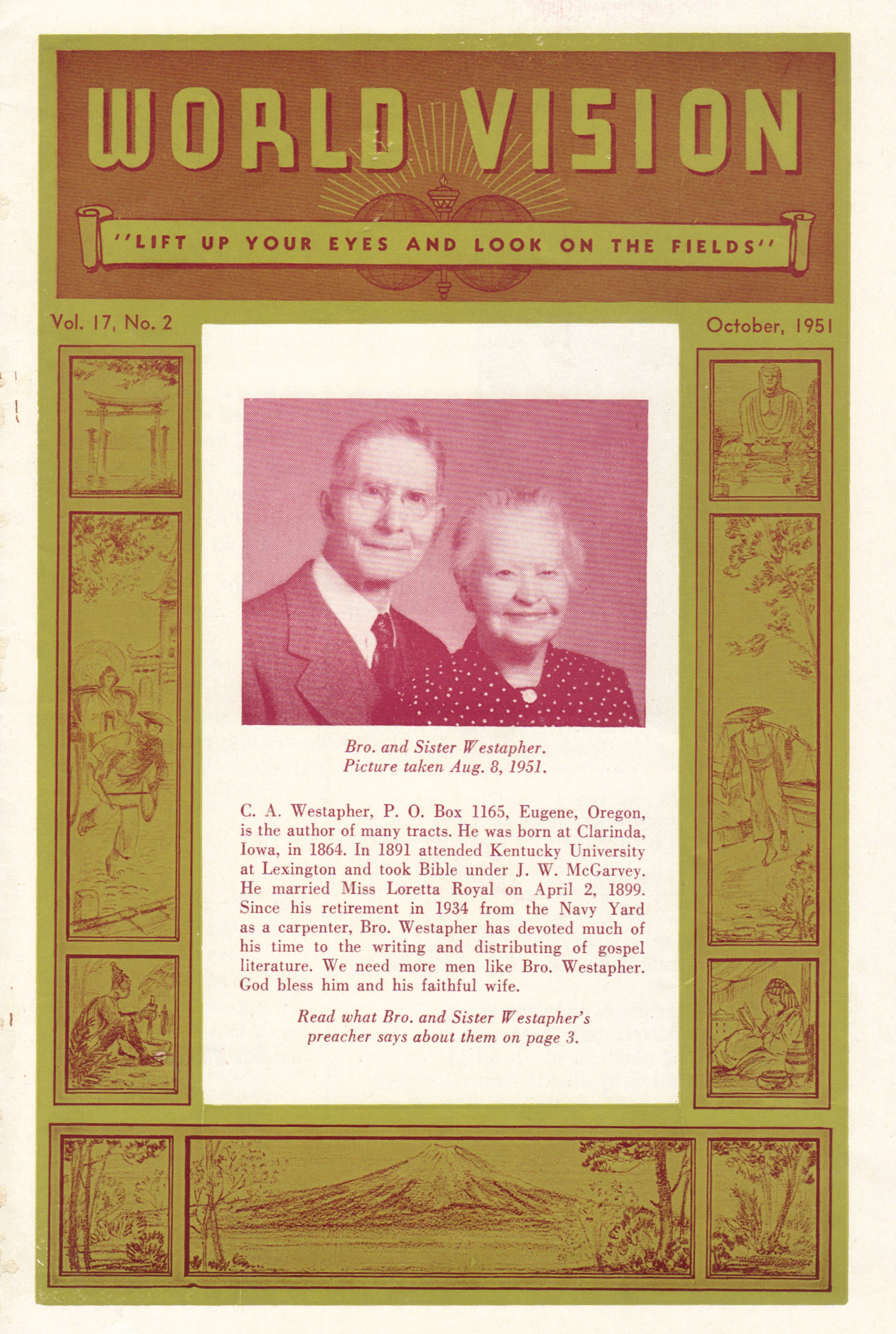
Biographical sketch of Clarence A. and Loretta R. Westapher, World Vision 17:2 (October 1951), front cover
This 1951 biographical sketch, with very nice photograph, helps us get to know the Westaphers. With the brief article from 1947, they provide several things:
–biographical information about C.A.W.
–indication that his tract writing began in 1917 (much earlier than the 1930s-1940s when the samples linked to above were published). Should we be looking for earlier tracts, or did it take a few years and a Barney Morehead to bring the manuscripts to the printing press?
–description of his intentional method of crafting tracts using only monosyllabic words. He was college educated, but spent his career with working men. Did he perceive that much of religious communication just is not accessible?
–a hard number (500,000) of tracts distributed. In context with what other fragmentary evidence I can glean about other tracts, this can help craft a description of the tract publishing and distribution.
–two anecdotes about the results of his writing ministry
A pair of brief articles, yes, but they are pregnant with possible usages.
